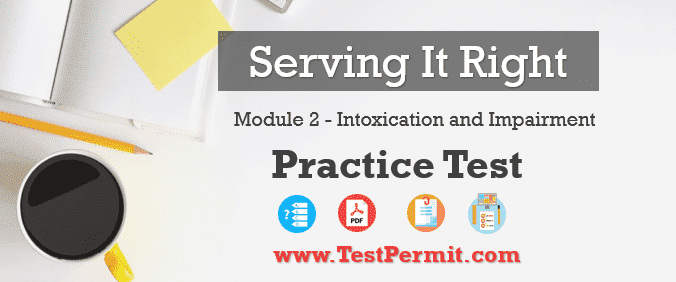Serving It Right Practice Test Module 2 Intoxication and Impairment. There are a total of 36 multiple choice questions, this will test your knowledge regarding Intoxication and Impairment. Therefore the question shall be, how do you prevent intoxication? And what can you do to stop someone from driving while impaired?
Responsible Beverage Service (RBS) programs like Serving It Right are designed to reduce these kinds of alcohol-related problems. In this module, you’ll learn about your role in making an RBS program successful through the three components of an effective RBS program:
- Professional environment
- Coordinated teamwork
- Intervention strategies
Consistent implementation of the Policy will help ensure responsible beverage service, support staff and protect your establishment from unwanted lawsuits.
Serving It Right Practice Test Module 2
| Name of the Test | Serving It Right Exam |
| Test Type | Practice Test |
| Topics Covered | Module 2″ Intoxication and Impairment |
| Total questions | 36 |
| Passing marks | 80% |
| Time Limit | N/A |
